Units, Measurement, Dimension
Dimension“This could be the discovery of the century, depending of course, on far it goes down”
Why?
U.S. Food and Drug Administration
Make No Mistake: Medical Errors Can Be Deadly Serious
The American Hospital Association lists these as some common types of medication
errors:
•incomplete patient information
•unavailable drug information
•miscommunication of drug orders, which can involve poor handwriting, confusion
between drugs with similar names, misuse of zeroes and decimal points, confusion
of metric and other dosing units, and inappropriate abbreviations
example
•Medication errors in US: 44000-98000 deaths/year
•4th-6th leading cause of death in US
•3000-6800 are due to medication math errors
•Unit conversion (e.g. grams into milligrams)
•Translation language into equations (e.g. a solution of 50 1-mg drops per liter
water into 1 mg/20 ml)
•Unit conversions are also important in many other fields (packaging,
architecture, construction etc etc)
What is a meter?
•Early 18thCentury:
•Length of pendulum with half length of
1s
•Distance from N-pole to Equator via Paris /107
•1791: second was chosen and
1874 Alloy was made
•1889:more precise by using Platinum/Iridium Alloy
•1960:Using
wavelength by using Krypton-86 radiation
•1983: distance traveled by light in
vacuum in 1/299792458 s
What is a second?
•Originally 1/86400 of a mean solar day
•1960: based on a tropical year
•1967: 9192631770 periods of radiation corresponding to the transition between
two hyperfine states of the ground state of 133Cesium
What is a kilogram?
•End of 18th century: 1 dm3of water
•1889: defined to a Platinum-Iridium weight
Système Internationale (SI)
7 Standard Units: We will use them!!
| Quantity | Name | unit |
| length | meter | m |
| mass | kilogram | kg |
| time | second | s |
| electrical Current | Ampere | A |
| temperature | Kelvin | k |
| amount of substance | mole | mol |
| Luminous intensity | candela | cd |
Examples:
Speed: m/s
Acceleration: m/s2
Force: kg·m/s2(N)
Dimensional Analysis
Dimension should be treated as algebraic quantities!
x = x0 + (at2)/2
Correct dimensionally?
[m]=[m]+([m]/[s]2)[s]2… YES!
Think about unit conversions!
X,X0in ft. a in m/s2
[ft]=[ft]+([m]/[s]2)[s]2… ????
1 m = 3.281 ft
[ft]=[ft]+([ft]/[s]2)[s]2… YES!
GOOD WAY TO CHECK IN EXAMS & LIFE!!
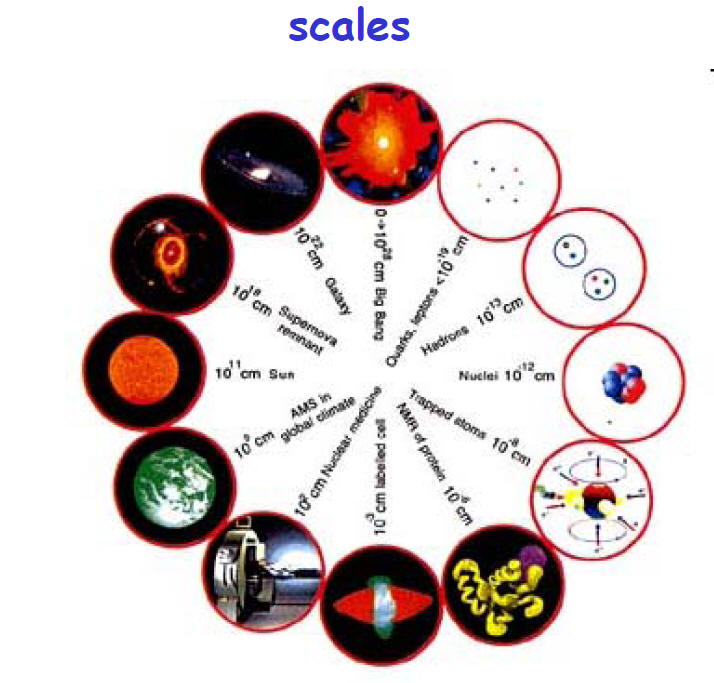
Very large & very small numbers
0.000000000000001=10-15=1E-15 femto (f)
0.000000000001=10-12=1E-12 pico (p)
0.000000001=10-9=1E-9 nano (n)
0.000001=10-6=1E-6 micro (μ)
0.001=10-3=1E-3 milli (m)
0.01=10-2=1E-2 centi (c)
0.1=10-1=1E-1 deci (d)
1=100=1E+0
10=101=1E+1 deca (da)
100=102=1E+2 hecto (h)
1000=103=1E+3 kilo (k)
1000000=106=1E+6 mega (M)
1000000000=109=1E+9 giga (G)
10000000000=1012=1E+12 tera (T)
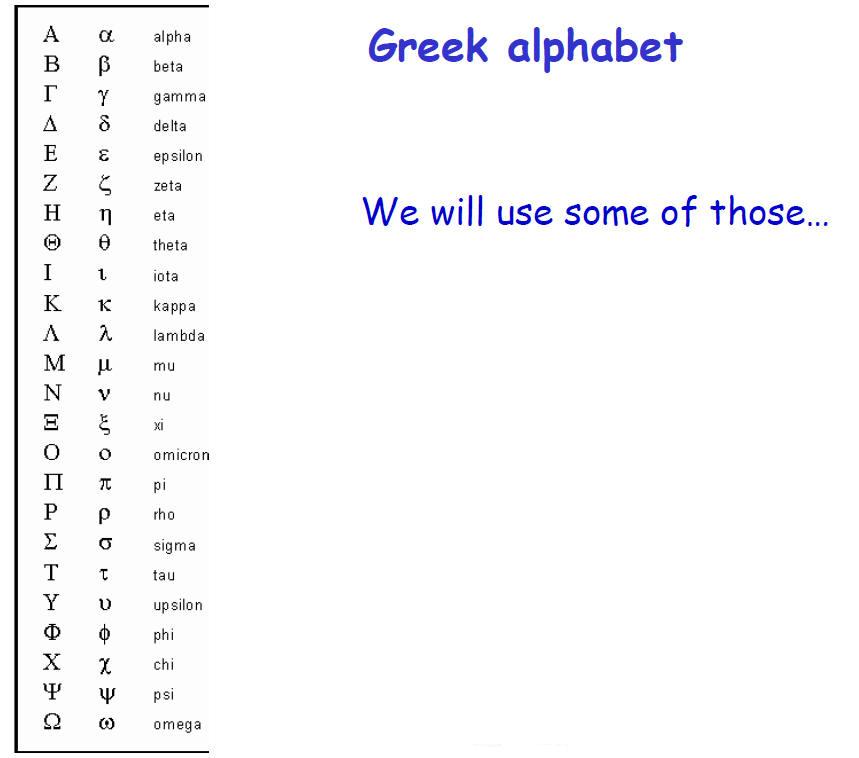
Uncertainty & Significance
1.2411 trillion digits known!!
π=3.1415926535 8979323846 2643383279 5028841971 6939937510 5820974944 5923078164 0628620899 8628034825 3421170679 8214808651 3282306647 0938446095 5058223172 5359408128 4811174502 8410270193 8521105559 6446229489 5493038196...
Significance & Uncertainty
Circumference=2πR=2·3.1415926... ·4.2 =
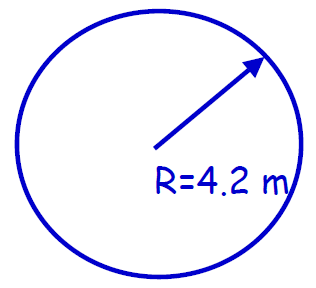
Calculator: 26.38937… m
Right answer: 26 m.
4.2 means that the true value lies
between 4.1 and 4.3:
2π4.1=25.761…=26 m
2π4.3=27.0176…=27 m
so: Right Answer with error: 26±1
The number of significant figures for a result of a division or multiplication
is the least accurate of the quantities being divided or multiplied.
Significance & Uncertainty
For addition and subtraction the number of decimal places should be equal to the smallest number of decimal places of any term in the sum:
3.0001 + 0.0025 = 3.0026
NUMBER OF DECIMAL PLACES IS NOT THE SAME AS THE NUMBER OF SIGNIFICANT FIGURES!
0.0025: 2 significant figures 4 decimal places
Scientific notation. For example 7·107or 7E+07
2D Geometrical objects
| object | surface | circumference |
 |
Length2 | 4xlength |
 |
½ x base x height | Side1+side2+side3 |
 |
πx radius2 Radius=diameter/2 | 2 x π x radius |
 |
Length x height | 2xlength + 2xheight |
 |
πxr1xr2 | - |
3D geometrical objects
| object | surface | volume |
 |
6xlength2 | length3 |
 |
2hw+2lh+2wh | hlw |
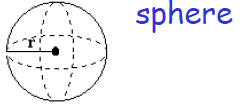 |
4πr2 | 4/3 x πr3 |
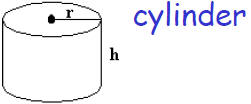 |
2πrh | πr2h |
Coordinate Systems
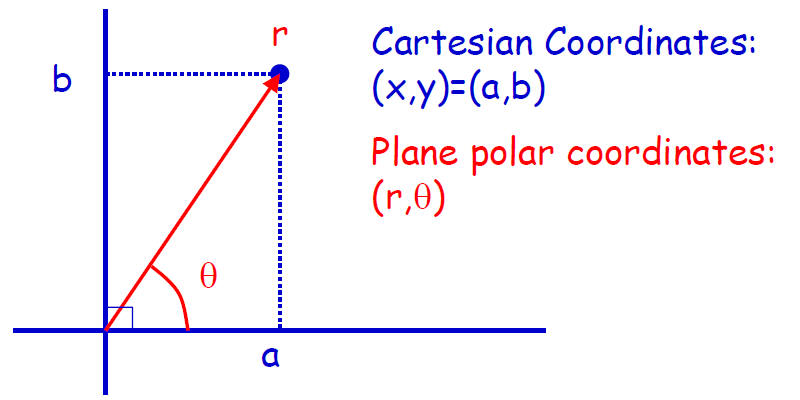
Frame transformation:
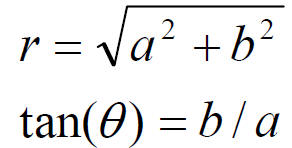
TRIGONOMETRY

SOH-CAH-TOA:
sin=opposite/hypotenuse
cos=adjacent/hypotenuse
tan=opposite/adjacent
Pythagorean theorem:
c2 = a2 + b2
Note that sin,cos,tan are dimensionless.
2πradians corresponds to 360o
Be careful…
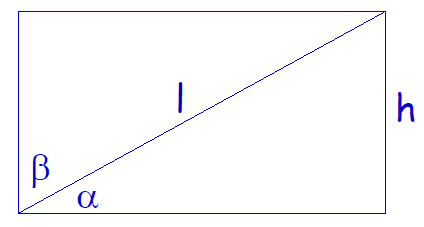
h=l x sinα=l x cosβ
Check carefully which angle is given
Solving quadratic equations
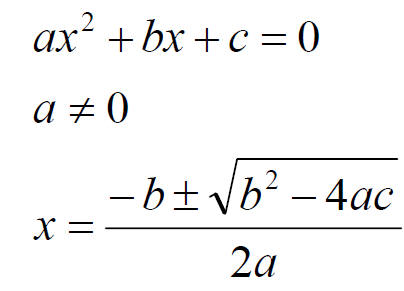
In general there are 2 solutions. In physics problems,
One of them is often not realistic and is thrown out.
How to solve a problem?
There are no general rules but here are some pointers:
1)READ problem carefully!
2)Summarize (throw away unnecessary info)
3)Visualize (drawing can often help)
4)Convert units (consistency)
5)Set up equations:
•Plug in numbers if not comfortable with solving sets of equations
•If confidents, plug in numbers at last moment
6) Check whether answers make sense
7) In exams: once you have solved a problem, check calculations one more time at
the end of exam. Especially important if you tend to make small mistakes
Problem:The diameter of the orbit of the earth around the sun is 4x10^11m. (1) What is the distance traveled by the earth in 1 year? (2) in the polar coord. System with the sun in the center, over what angle does the earth travel in 0.30 year?

Calculate the length of the shorter of two sides of a rectangle, which has an area of 24 m2and a perimeter (circumference) of 22 m.
A=lh
C=2l+2h
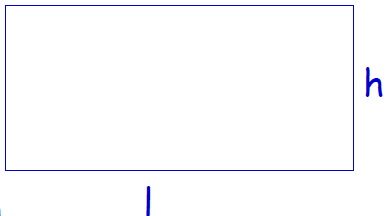
24=lh so l=24/h
22=2l+2h=2x24/h+2h=48/h+2h
-2h2+22h-48=0

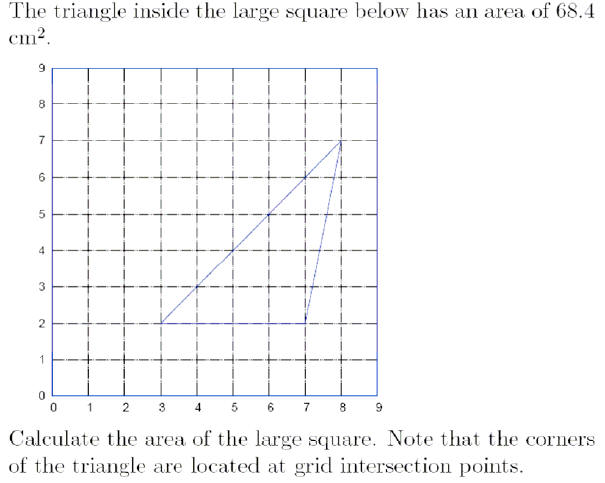
Area of triangle: ½ base x width = ½x4ux5u=10u2
(u: unit of drawing)
10u2=68.4cm21 u2=6.84cm2
Full square: 9x9u2=81u2corresponds with 81x6.84=554 cm2


